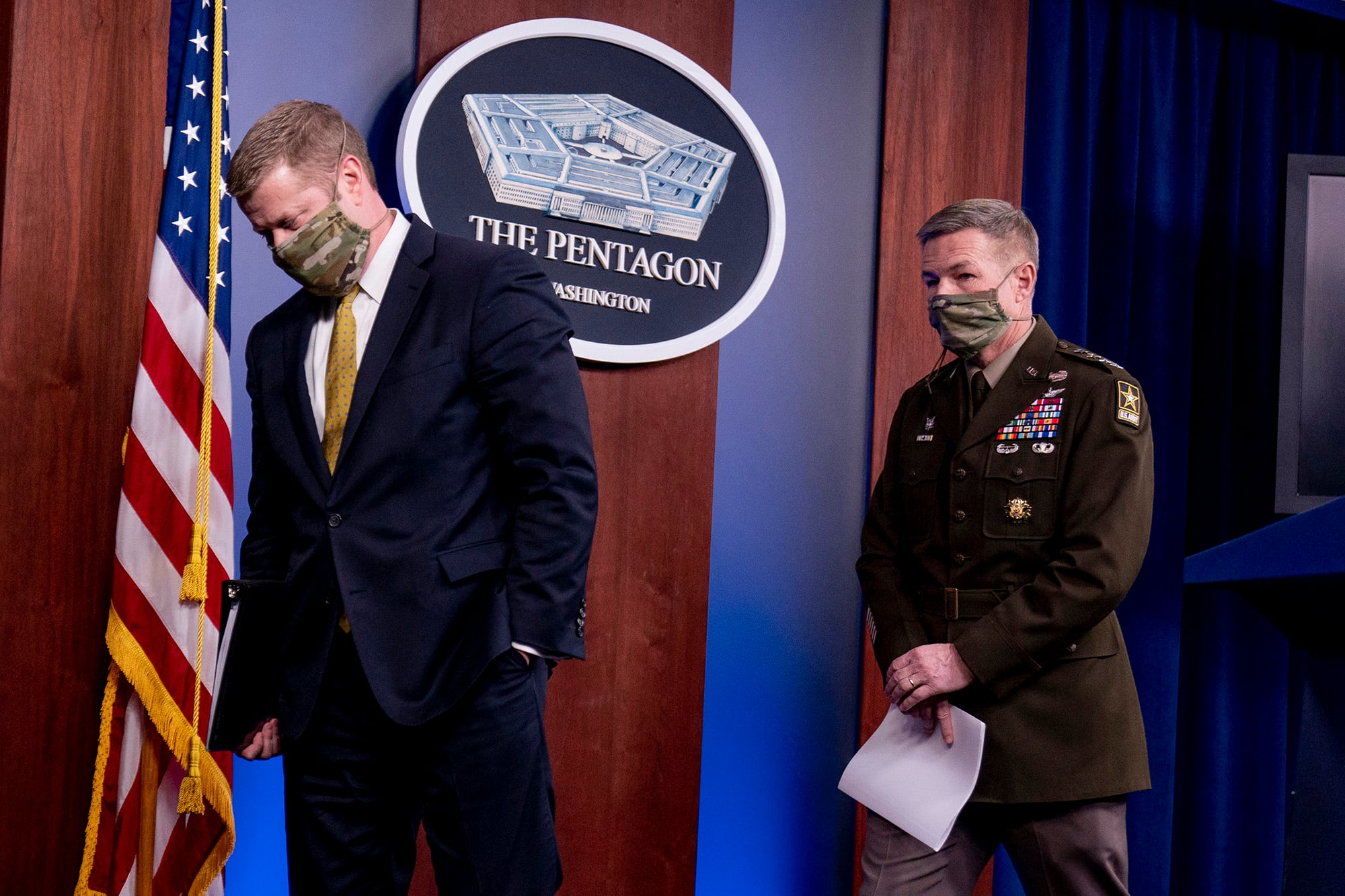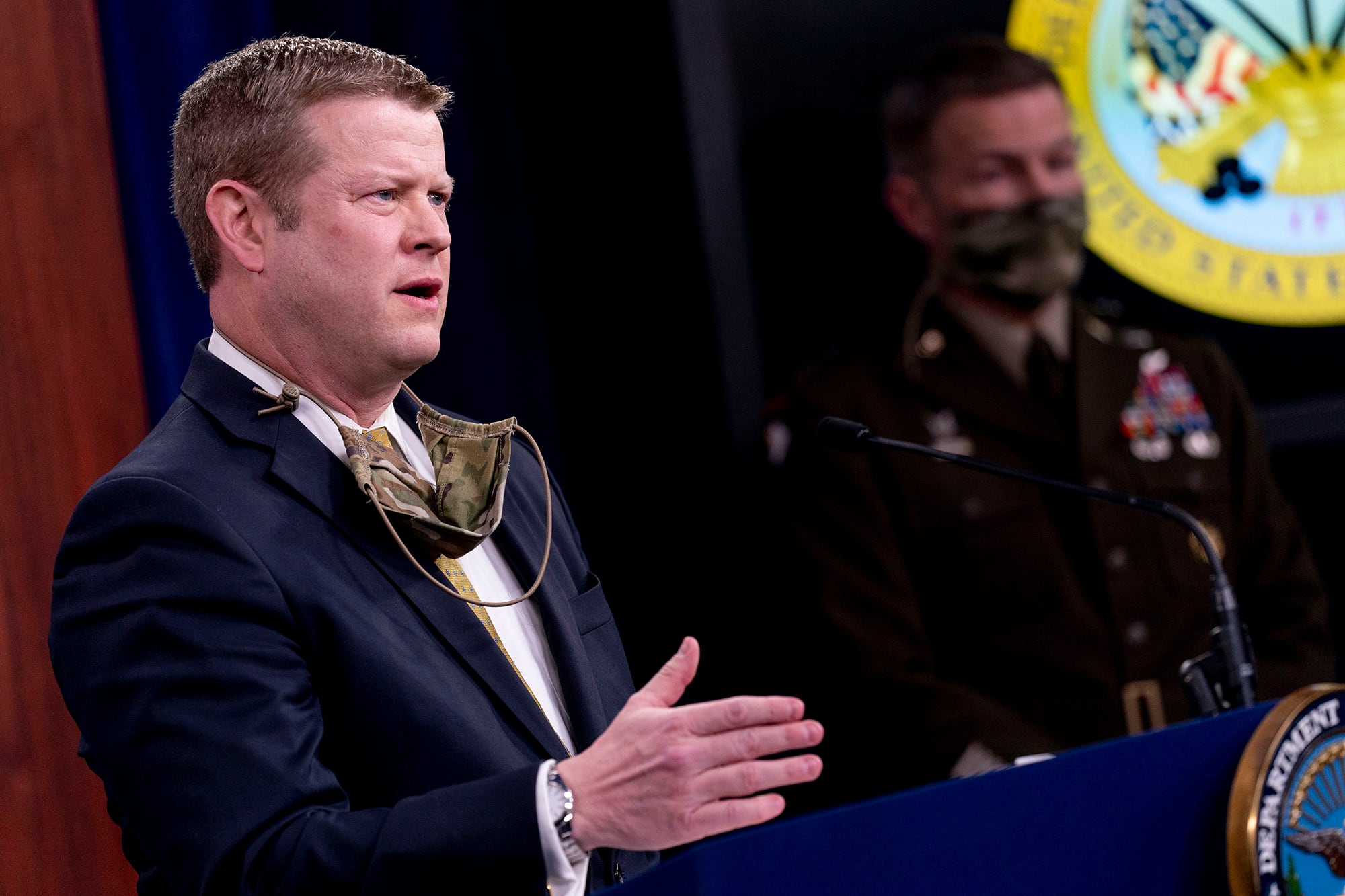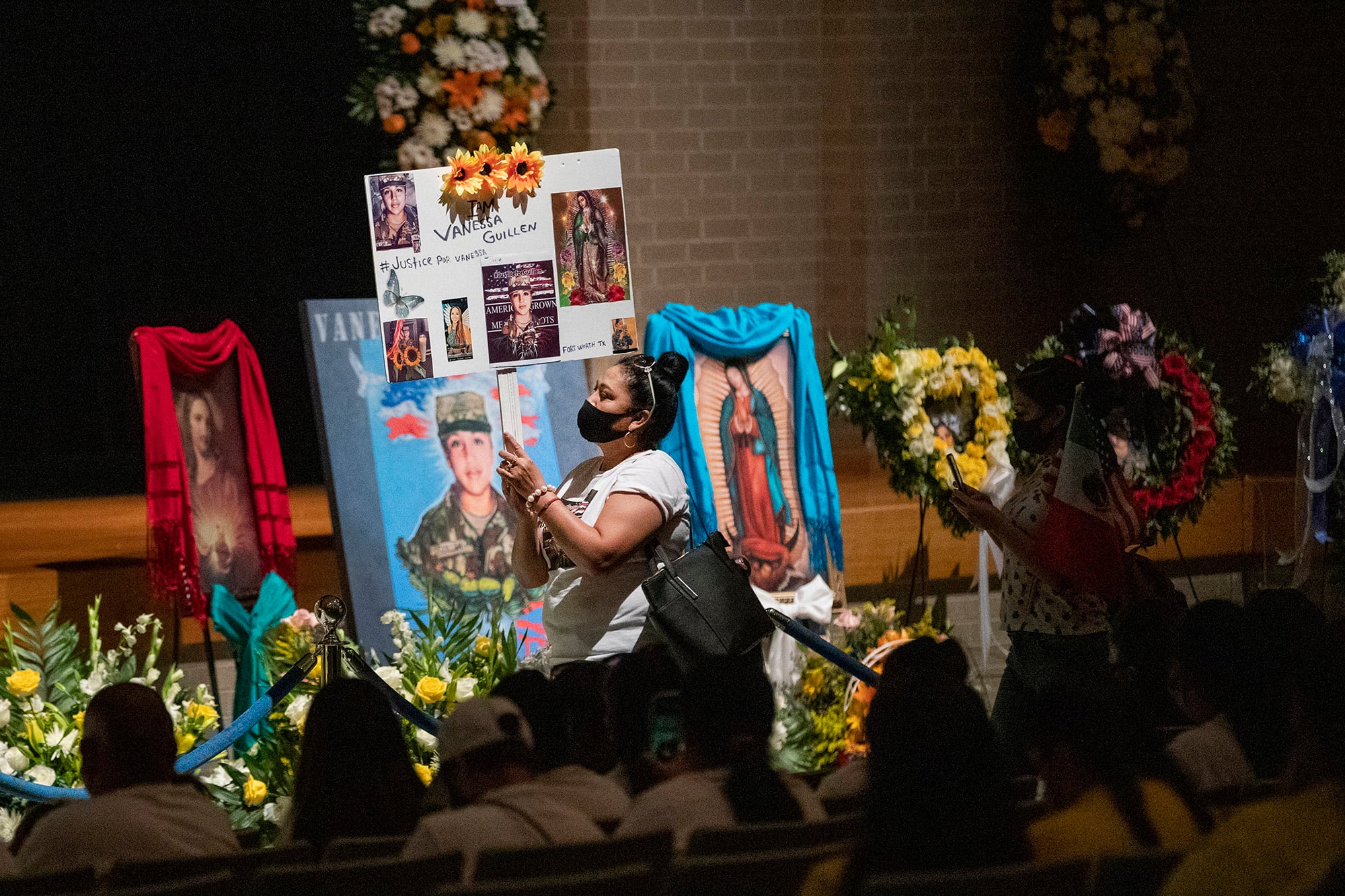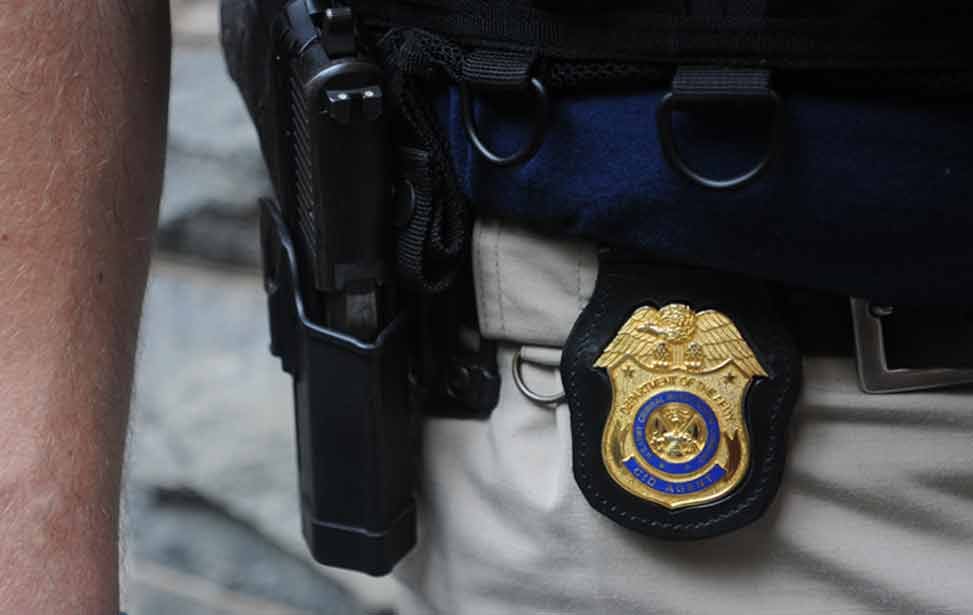An independent report on the command climate at Fort Hood, Texas, shined a light on years-long issues with the post’s criminal investigation detachment and showed how those problems were exposed during the search for Spc. Vanessa Guillen.
An independent committee of five civilians found that the more than 40 Army CID agents charged with investigating felony crimes and violations of military law at Fort Hood were largely inexperienced, underresourced and understaffed.
The Fort Hood CID detachment was “basically being used as a training ground,” said Chris Swecker, a former FBI inspector who served on the committee. “They had a difficult time, and it’s not their fault.”
“That would be like staffing the New York field office of the FBI with new agents right out of Quantico,” Swecker said Wednesday at a congressional hearing. “This is one of the busiest military installations in the country, maybe around the globe, and yet there were very few experienced agents.”
Much of the report focused on the handling of sex crimes, given allegations brought forth by Guillen’s family that she experienced sexual harassment prior to her murder. But the committee found that Fort Hood CID was well short of the number of investigators necessary to handle the workload there.
The post’s CID detachment opened roughly 350 sex crime cases annually between fiscal years 2018 and 2020 and could justify an allocation of nine or 10 sexual assault investigators. Yet, the detachment only had three on staff at the time of the report.
Other issues included an incredibly high rate of drug use among Fort Hood soldiers that wasn’t properly dealt with and poor interviewing skills among agents, all of which are being looked at by the larger CID enterprise.
“We are carefully reviewing all of the information in the Report of the Fort Hood Independent Review Committee,” said Chris Grey, a spokesman for Army CID, in a statement to Army Times. “We recognize the importance of this review and are thankful for the hard work of the committee.”

The report focuses on Fort Hood specifically, but committee members said that the issues they found could extend to other Army installations.
“There aren’t an anomalous number of death cases at Fort Hood in terms of homicides, but the homicides that did occur got intense media attention,” Swecker said. “What we found in the death cases was CID just needed more experience and continuity inside the detachment there and it may be systemic across CID — that there just isn’t enough longevity.”
‘Almost debilitating’ lack of continuity
There “was a serious and almost debilitating lack of continuity” among the Fort Hood special agent ranks that hindered their overall mission, the committee said.
Enlisted and warrant officer agents at Fort Hood are typically moved to another installation after reaching the two-year mark, a problem that Swecker said could be solved by hiring more civilian agents who stay on much longer.
The special agent in charge of Fort Hood CID moved to another post in the middle of the Guillen investigation, “one of the most complex and high profile investigations the office has ever handled,” according to the report.
“This was noted by local law enforcement and prosecutors who considered it unwise and detrimental to the case,” the document reads.
RELATED

The vast majority of agents were also subject to deployment, TDY assignments, on- and off-site training programs, protection details, ancillary duties and attendance at field training events.
“Numerous law enforcement, civilian and military sources cited a persistent lack of continuity as a problem in establishing any kind of working relationship with CID at Fort Hood,” the report reads.
Frequent departures were also problematic because Fort Hood CID was flush with inexperienced agents who had only recently graduated from their initial training course.
Bungled interviews in the Guillen case
The committee found that the conduct of the Guillen investigation “exposed the inexperience” of the Fort Hood CID agents. Early in the investigation, various agents conducted brief, choppy interviews with key individuals.
“In these critical early interviews there was no indication in the file of whether the interviews were by phone or in person,” the report reads. “There were no witness contacts provided, insufficient details gleaned, and no witness diagrams. The interviews appeared to be rote and indeed checklist driven.”
Days after Guillen disappeared, an agent interviewed an armory custodian who last saw Guillen on April 22 as she was going to meet Spc. Aaron Robinson alone in his unit’s armory — an isolated area in a basement. Prosecutors now say that Robinson killed Guillen inside an armory on post and disposed of her remains along a nearby river.
Another CID agent realized that Guillen’s phone records showed she texted Robinson at about 10 a.m. on the day she was last seen. Though Robinson was interviewed shortly after this connection was made, there’s no indication that CID agents attempted to examine or take custody of his phone, take a picture of the important 10 a.m. text or take any steps whatsoever to preserve evidence on the phone device itself, the committee determined.
“This interview was short, perfunctory, and lacked important details,” the report reads, adding that CID instead “bought wholesale” into witness testimony provided by three noncommissioned officers.

Those NCOs claimed to see Guillen leaving Robinson’s armory at 1:30 p.m. April 22. None of the NCOs were in Guillen’s unit, nor were they personally acquainted with her, the report stated. They also provided conflicting descriptions of her clothing.
“As a result, CID agents did not consider SPC Robinson of sufficient interest to even examine his phone, subject him to a more intense investigative focus and at least a more intense and detailed interview by an experienced special agent,” the report reads. “The NCOs later changed their stories about the time they supposedly observed Guillen the morning she disappeared.”
Robinson took his own life months later when police attempted to approach him July 1.
Experienced investigators would “not have been thrown off by the red herring” presented by the statements of those three NCOs, Swecker said Wednesday.
Inexperienced agents
A review of Fort Hood CID’s ranks in 2019 revealed that 58 of the 63 enlisted agents were apprentices fresh out of the 16-week CID Special Agent Course at Fort Leonard Wood, Missouri, and not fully accredited to conduct investigations solo.
“These are brand new agents right out of Fort Leonard Wood with very few mentors,” Swecker said. “[There were] just not enough journeymen level special agents to mentor [them].”
The report details several cases in which that inexperience caused issues with case files, including a lack of attention to detail, completeness and documentation.
For example, in one death case in April 2020 a soldier overdosed on methamphetamine and Fentanyl. There were no interviews, no crime scene investigation and no apparent attempt to determine who supplied the drugs, according to the report. There was also no attempt to investigate the soldier’s history of drug use or the identity of his associates, the report stated.
“Drug overdoses should be fully investigated to determine where, when and how such drugs come into the possession of a soldier and who supplied the drugs for potential prosecution of the supplier and to cut off the flow of drugs to the post,” the document reads.
A ‘thriving drug culture’
Fort Hood has the highest drug test failure rate per test taken of all divisional posts, the report stated.
Fort Hood’s failure rates are more than 30 percent higher than divisional posts and 151 percent higher than non-divisional posts within the United States. Fort Hood’s average drug crime rates from 2015 to 2020 were almost 31 percent higher than U.S. Army Forces Command averages.
One of Fort Hood CID’s responsibilities is to maintain a drug suppression program. When soldiers fail drug tests, military police investigators interview them.
“Despite this gilded opportunity for the gathering of intelligence and development of human sources, nothing was done in that regard,” the report reads. “In fact, this review found that very little actual drug suppression took place at Fort Hood despite what area police chiefs described as a ‘thriving drug culture’ among soldiers they encountered as a result of drug violations within their jurisdictions involving Fort Hood soldiers.”
High suicide rates
Fort Hood had the second highest number of attempted suicides, by a large margin, over the divisional posts that had the third and fourth highest rates.
However, because of differences in how suicide attempts are reported across commands, these higher rates could reflect a lack of uniform policy, rather than higher prevalence, the report cautioned.
Still, Fort Hood CID agents investigated every incident of suicide that occurred on post involving a soldier during the review period, 2018 to 2020.
“We didn’t see a deep enough investigation into the 50 suicide files that I reviewed, nor the death investigations, and again, it’s not the fault of the CID agents,” Swecker said. “It was just being used as a training ground.”

One investigation that left at least some on the committee concerned was the handling of Sgt. Elder Fernandes’ death.
Fernandes’ body was found Aug. 25 by a railroad employee about 30 miles east of Fort Hood. He had been hanging from a tree, according to Natalie Khawam, an attorney who represents both the Fernandes and Guillen families.
Prior to his death, Fernandes reported abusive sexual contact and worked with a victim advocate. Army CID agents said an investigation was completed, no witnesses were found and the allegation was determined unsubstantiated.
Swecker told Congress Wednesday that the person Fernandes had accused was exonerated largely due to a successful polygraph test.
“I personally reviewed his investigative file. … I just don’t have a lot of faith in the polygraph,” said Swecker. “We felt that should not be the sole criteria in exonerating someone on sexual harassment.”
Recommendations
The report recommended that Army CID commanders ensure that the Fort Hood detachment, as well as other CID offices that cover corps- and division-level posts maintain a sufficient number of agents with more than five years of experience and highly experienced agents with more than eight years on the job.
Army CID should also increase the availability of equipment for electronic evidence forensic services, particularly for electronic data from mobile phones and laptops.
Complex investigations at Fort Hood were slowed down by the shortage of electronic forensic exploitation equipment, application licenses and agents qualified to retrieve, analyze and exploit the evidence, the report stated.
Other bottlenecks were DNA and body fluid testing and analysis, which are often required in sex crime cases. All DNA testing takes place at the CID forensic lab in Georgia, which has a one- to two-month turnaround, the report added.
Finally, Fort Hood CID should work with local law enforcement to identify high-risk establishments and living areas to rapidly declare them off limits, the report recommended.
When the committee reviewed Fort Hood CID’s case files, they found that off-post suicides and deaths were not fully investigated by agents to determine whether there were contributory causes, such as lifestyle issues, locations or other influences that would inform the command about certain activities that could place soldiers at risk.
In 2019, there was a homicide of a soldier outside a notorious strip bar in Killeen, the town surrounding Fort Hood.
“It was determined that a number of establishments are known for prostitution and drugs. In fact, the area Police Chiefs stated that prostitution was rampant. Several of the death investigations revealed a nexus with vice crimes,” the report reads.
Kyle Rempfer was an editor and reporter who has covered combat operations, criminal cases, foreign military assistance and training accidents. Before entering journalism, Kyle served in U.S. Air Force Special Tactics and deployed in 2014 to Paktika Province, Afghanistan, and Baghdad, Iraq.





